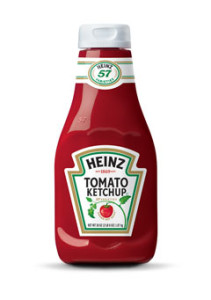 Slime, oobleck, and other non-Newtonian fluids are always fun to present in class because they’re so surprising and… well… gooey! Whether you’re teaching in kindergarten or college, non-Newtonian fluids are always a hit. They are also a fantastic way to start a discussion on polymers, cross-linking, viscosity, and many other important chemical principles.
Slime, oobleck, and other non-Newtonian fluids are always fun to present in class because they’re so surprising and… well… gooey! Whether you’re teaching in kindergarten or college, non-Newtonian fluids are always a hit. They are also a fantastic way to start a discussion on polymers, cross-linking, viscosity, and many other important chemical principles.
What’s Next?
 As scientists continue to study non-Newtonian fluids, new advancements continue to be made. What technical advances might we see in the future? This is a great discussion starter for students. Here are some ideas you might want to bounce around (no pun intended):
As scientists continue to study non-Newtonian fluids, new advancements continue to be made. What technical advances might we see in the future? This is a great discussion starter for students. Here are some ideas you might want to bounce around (no pun intended):
Bullet-proof vests and body armor?
Name that Non-Newtonian Fluid
Challenge your students to think of as many non-Newtonian fluids as they can. To be classified as a non-Newtonian fluid, a substance must sometimes act like a solid, and sometimes like a liquid.
 Answers include:
Answers include:
- cream
- custard
- Elmer’s glue
- honey
- ketchup
- margarine
- mayonnaise
- mustard
- paint
- shampoo
- shaving cream
- toothpaste
Newton, meet Heinz

photo source: HJ Heinz Company
Non-Newtonian fluids change their viscosity or flow behavior under stress. If you apply a force to such fluids (let’s say you hit, shake, or jump on them), the sudden application of stress can cause them to get thicker and act like solids. In some cases it results in the opposite behavior—they may get runnier than they were before. Once you remove the stress (let them sit still or only move them slowly), they will return to their earlier state.
Let’s say you want to get some ketchup out of a bottle. You know the bottle isn’t empty, but when you turn it upside down, nothing comes out. So what do you do? You shake or hit the bottle. This causes the ketchup to become more liquid. Why? Because the ketchup’s viscosity decreases and it gets runnier with applied stress. (Adapted from http://sciencelearn.org.nz/Science-Stories/Strange-Liquids/Non-Newtonian-fluids.)
The History of Silly Putty
We’re always amazed (and amused) by the number of inventions that were simply mistakes made by scientists on alternative quests. The Slinky, for instance… Not to mention penicillin! Your students may enjoy reading this brief History of Silly Putty, which was invented by a chemical engineer seeking a synthetic replacement for rubber during World War II. For many people, Silly Putty was THE original “gak.”
